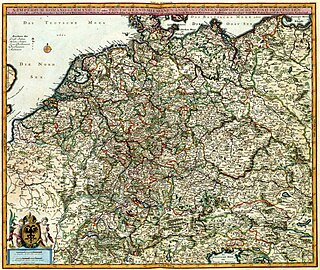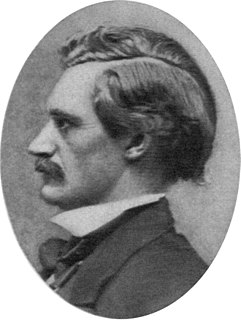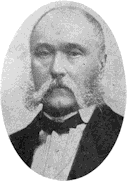 W
WThe German diaspora consists of German people and their descendants who live outside of Germany. The term is used in particular to refer to the aspects of migration of German speakers from central Europe to different countries around the world. This definition describes the "German" term as a sociolinguistic group as opposed to the national one since the emigrant groups came from different regions with diverse cultural practices and different varieties of German. For instance, the Alsatians and Hessians were simply called Germans once they set foot in their new homelands.
 W
WIn Nazi German terminology, Volksdeutsche were "people whose language and culture had German origins but who did not hold German citizenship". The term is the nominalised plural of volksdeutsch, with Volksdeutsche denoting a singular female, and Volksdeutsche(r), a singular male. The words Volk and völkisch conveyed the meanings of "folk".
 W
WThe Amana Colonies are seven villages on 26,000 acres (11,000 ha) located in Iowa County in east-central Iowa, United States: Amana, East Amana, High Amana, Middle Amana, South Amana, West Amana, and Homestead. The villages were built and settled by German Pietists, who were persecuted in their homeland by the German state government and the Lutheran Church. Calling themselves the True Inspiration Congregations, they first settled in New York near Buffalo in what is now the town of West Seneca. However, seeking more isolated surroundings, they moved to Iowa in 1856. They lived a communal life until 1932.
 W
WThe Amish are a group of traditionalist Christian church fellowships with Swiss German and Alsatian Anabaptist origins. They are closely related to Mennonite churches. The Amish are known for simple living, plain dress, Christian pacifism, and slowness to adopt many conveniences of modern technology, with a view to not interrupt family time, nor replace face-to-face conversations whenever possible, and to maintain self-sufficiency. The Amish value rural life, manual labor, humility, and Gelassenheit, all under the auspices of living what they interpret to be God's word.
 W
WDemographic estimates of the flight and expulsion of Germans have been derived by either the compilation of registered dead and missing persons or by a comparison of pre-war and post-war population data. Estimates of the number of displaced Germans vary in the range of 12.0–16.5 million. The death toll attributable to the flight and expulsions was estimated at 2.2 million by the West German government in 1958 using the population balance method. German records which became public in 1987 have caused some historians in Germany to put the actual total at about 500,000 based on the listing of confirmed deaths. The German Historical Museum puts the figure at 600,000 victims and maintains that the official figure of 2 million cannot be supported. However, the German Red Cross still maintains that death toll in the expulsions is 2,251,500 persons.
 W
WDeutsche Schule Istanbul, with formal Turkish name Özel Alman Lisesi or İstanbul Alman Lisesi or simply Alman Lisesi is a private international high school in the Beyoğlu district of Istanbul, Turkey. It is responsible to both the Federal Ministry of Education and Research of Germany and the Ministry of National Education of Turkey.
 W
WThe German Emigrants Database is a research project on European emigration to the United States of America. It is hosted by the Historisches Museum Bremerhaven. The database contains information about individuals who emigrated during the period of 1820-1939 mainly through German ports towards the United States. The aim of the GED is to make the collected data available to historical and social science research worldwide. Furthermore, the GED enables socio-statistical evaluations of emigrant data. In addition, the GED allows interested people to look for immigrant ancestors. The German Emigrants Database is financed by private donations and income generated by the database. Thus it receives no public subsidy. The revenues will be used entirely for the further expansion of the database. Legal and financial holder of the GED is the charitable “Association of Friends of the Historisches Museum Bremerhaven e.V.”
 W
WThe Forty-Eighters were Europeans who participated in or supported the revolutions of 1848 that swept Europe. In the German states, the Forty-Eighters favored unification of the German people, a more democratic government, and guarantees of human rights. Disappointed at the failure of the revolution to bring about the reform of the system of government in Germany or the Austrian Empire and sometimes on the government's wanted list because of their involvement in the revolution, they gave up their old lives to try again abroad. Many emigrated to the United States, the United Kingdom, and Australia after the revolutions failed. These emigrants included Germans, Czechs, Hungarians, and others. Many were respected and politically active, wealthy, and well-educated. A large number went on to be very successful in their new countries.
 W
WThe German Palatines were emigrants from the Middle Rhine region of the Holy Roman Empire who arrived in England between May and November 1709. Although only a minority were from the Palatinate, the name came to refer to the entire group. They were both Protestant and Catholic farmers displaced by French invasions and famine during the Nine Years' War and War of Spanish Succession. After arriving in England, many were resettled in Ireland and British North America.
 W
WThe German town law or German municipal concerns was a set of early town privileges based on the Magdeburg rights developed by Otto I. The Magdeburg Law became the inspiration for regional town charters not only in Germany, but also in Central and Eastern Europe who modified it during the Middle Ages. The German town law was used in the founding of many German cities, towns, and villages beginning in the 13th century.
 W
WHutterites, also called Hutterian Brethren, are a communal ethnoreligious branch of Anabaptists, who, like the Amish and Mennonites, trace their roots to the Radical Reformation of the early 16th century, which form intentional communities.
 W
WInternment of German resident aliens and German-American citizens occurred in the United States during the periods of World War I and World War II. During World War II, the legal basis for this detention was under Presidential Proclamation 2526, made by President Franklin Delano Roosevelt under the authority of the Alien Enemies Act.
 W
WSt. George's Austrian High School is a private Austrian-Turkish high school located in Karaköy, Beyoğlu, Istanbul, Turkey. It is one of several secondary schools that were founded by European or American missions in Turkey during the 19th century, but were then secularized after the founding of the modern Turkish Republic in 1923.
 W
WSchlaraffia is a worldwide German-speaking society founded in Prague in 1859 with a pledge of friendship, art and humor.
 W
WThe Schmiedeleut, also Schmiedeleit, are a branch of the Hutterites that emerged in 1859. It is divided into two subgroups.
 W
WThe German Templer Society emerged in Germany during the mid-nineteenth century, with its roots in the Pietist movement of the Lutheran Church, and its history a legacy of preceding centuries during which various Christian groups undertook to establish what they saw as the perfect Christian religion in preparation for Christ's promised return. The movement was founded by Christoph Hoffmann [1815-1885], who believed that humanity’s salvation lay in the gathering of God's people in a Christian community. He also believed that the second coming of Christ was imminent, and that according to Biblical prophecy it would take place in Jerusalem, where God's people were to gather as a symbol of the rebuilding of the temple. He established a number of German Templer Colonies in Palestine.